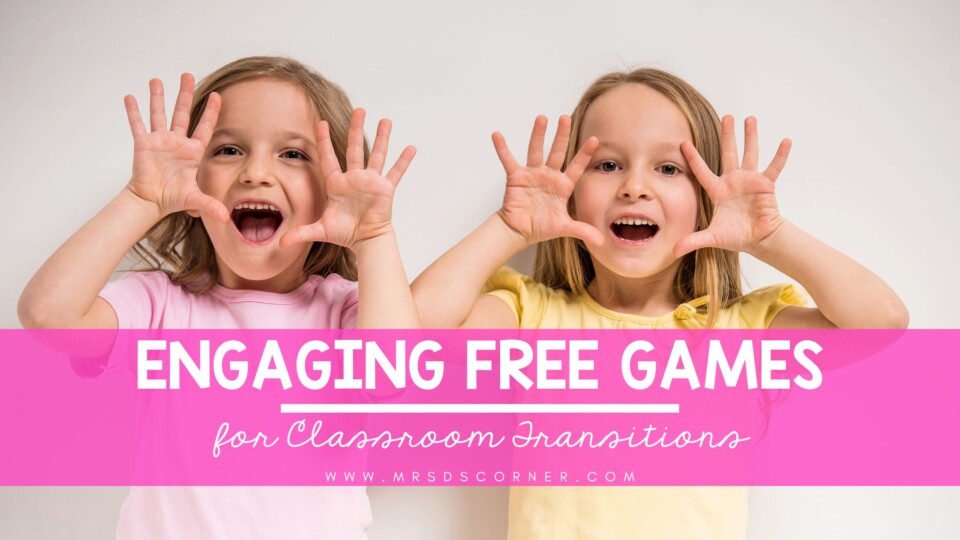Finding engaging free games for transitions or brain breaks can be a challenge, especially when working with elementary resource classes. Here are some excellent options that require no physical materials.


These free games are fun, adaptable, and can cater to the varied needs of your students from 1st to 5th grade.
20 Questions
Objective: Guess the mystery item with yes or no questions.
Instructions:
- One student thinks of an object, animal, or person.
- The other students take turns asking yes or no questions to gather clues about the mystery item.
- Students can continue asking questions until they either guess the item correctly or reach 20 questions.
- If a student guesses correctly, they can take a turn thinking of a new item.
Adaptation: For younger students, provide categories (e.g., animals, food) to help guide their questions.
I’m Going on a Trip
Objective: Use creativity and critical thinking to pack for a trip based on secret rules.
Instructions:
- Start by saying, “I’m going on a trip, and I’m packing…”
- Choose an item (real or imaginary) to pack and state it out loud.
- Classmates will then take turns saying what they would pack, but their items must follow a secret rule you establish (e.g., items that start with the letter “B” or items that are blue).
- After several rounds, reveal the rule and discuss what made certain items acceptable or not.
Adaptation: Change the rule for each round to keep it fresh and exciting.
Would You Rather?
Objective: Encourage decision-making and discussion among students.
Instructions:
- Pose a “Would you rather…” question with two choices (e.g., “Would you rather fly or be invisible?”).
- Students choose their answers by raising their hands or moving to designated areas of the room.
- Allow students to explain their choices to promote conversation and reasoning.
Adaptation: Tailor the questions to fit your students’ interests or current learning topics.
Categories Game
Objective: Think quickly within a designated category.
Instructions:
- Choose a category (e.g., colors, animals, ice cream flavors).
- Students take turns naming something that fits the category without repeating previous answers.
- If someone repeats an answer or takes too long to respond, they are out for that round.
Adaptation: Use categories relevant to classroom themes or subjects to reinforce learning.
Imaginary Hide and Seek
Objective: Boost imagination and creativity.
Instructions:
- One student closes their eyes while the others decide where to “hide” in their imagination.
- The seeker then opens their eyes and pretends to look for them by asking questions about where they might be hiding.
- Others can give clues or hints based on imaginative scenarios.
Adaptation: Use specific themes (e.g., hiding in a jungle, under the sea) to make it more engaging.
Silent Ball
Objective: Practice self-control and nonverbal communication.
Instructions:
- Students stand in a circle.
- One student starts with an imaginary ball and tosses it to another, who must catch it silently.
- If someone drops the “ball” or makes noise, they sit down.
- The last student remaining wins.
Adaptation: Introduce variations like adding challenges (e.g., tossing with one hand) as students improve.
Heads Up!
Objective: Encourage quick thinking and teamwork.
Instructions:
- One student holds their head down while another student thinks of an object.
- The group gives hints without saying the word until the student guesses it correctly.
- Rotate roles so everyone has a chance to guess and give clues.
Adaptation: Use subject-specific vocabulary or current lesson themes for hints.
These free games provide a variety of ways to keep students engaged during transitions or brain breaks without the need for any physical materials. Hallway waiting time is perfect for these – especially Silent Ball! They foster creativity, critical thinking, and communication skills while ensuring that all students can participate regardless of their abilities. Try incorporating these games into your routine to create a fun and interactive environment!

